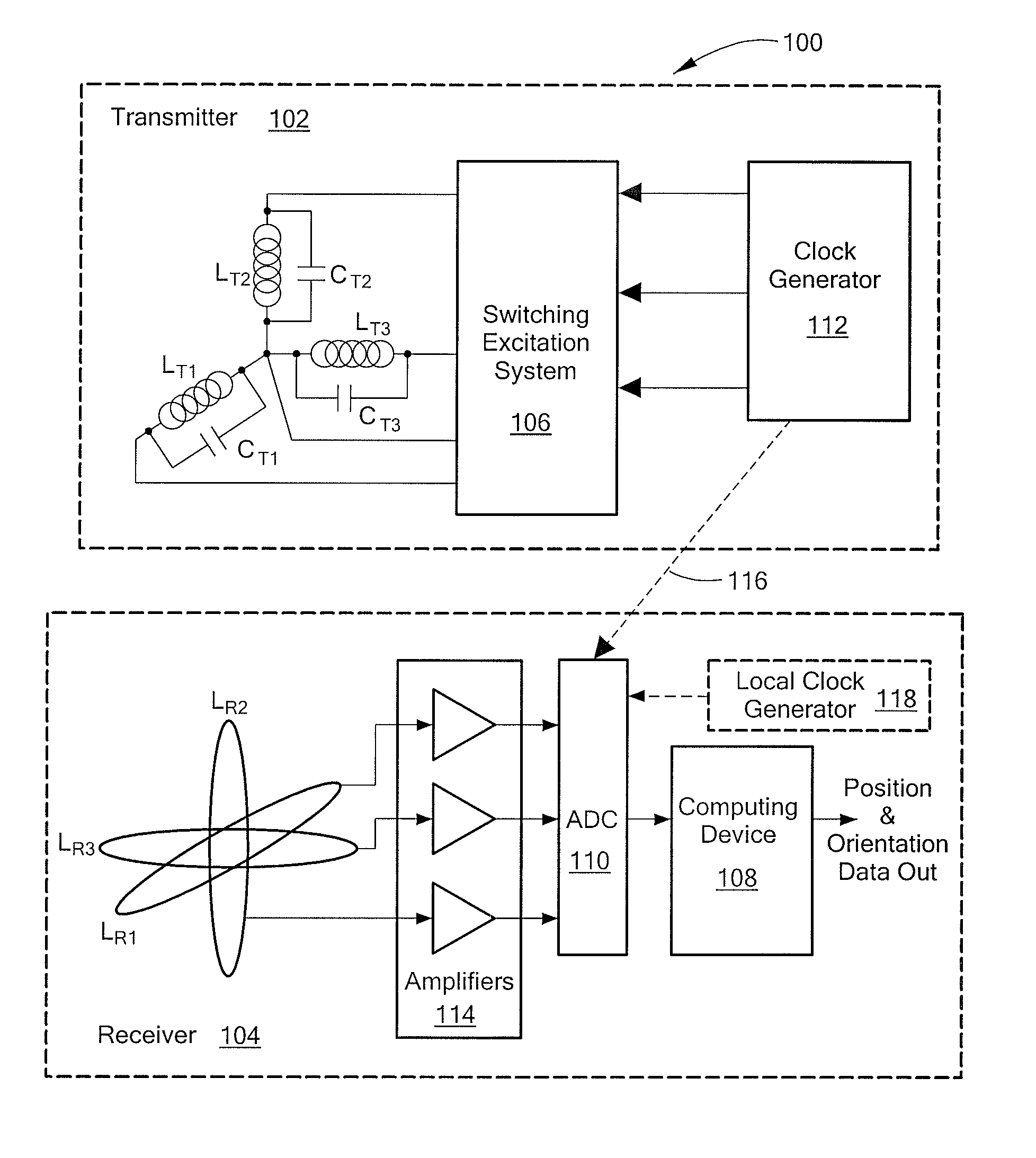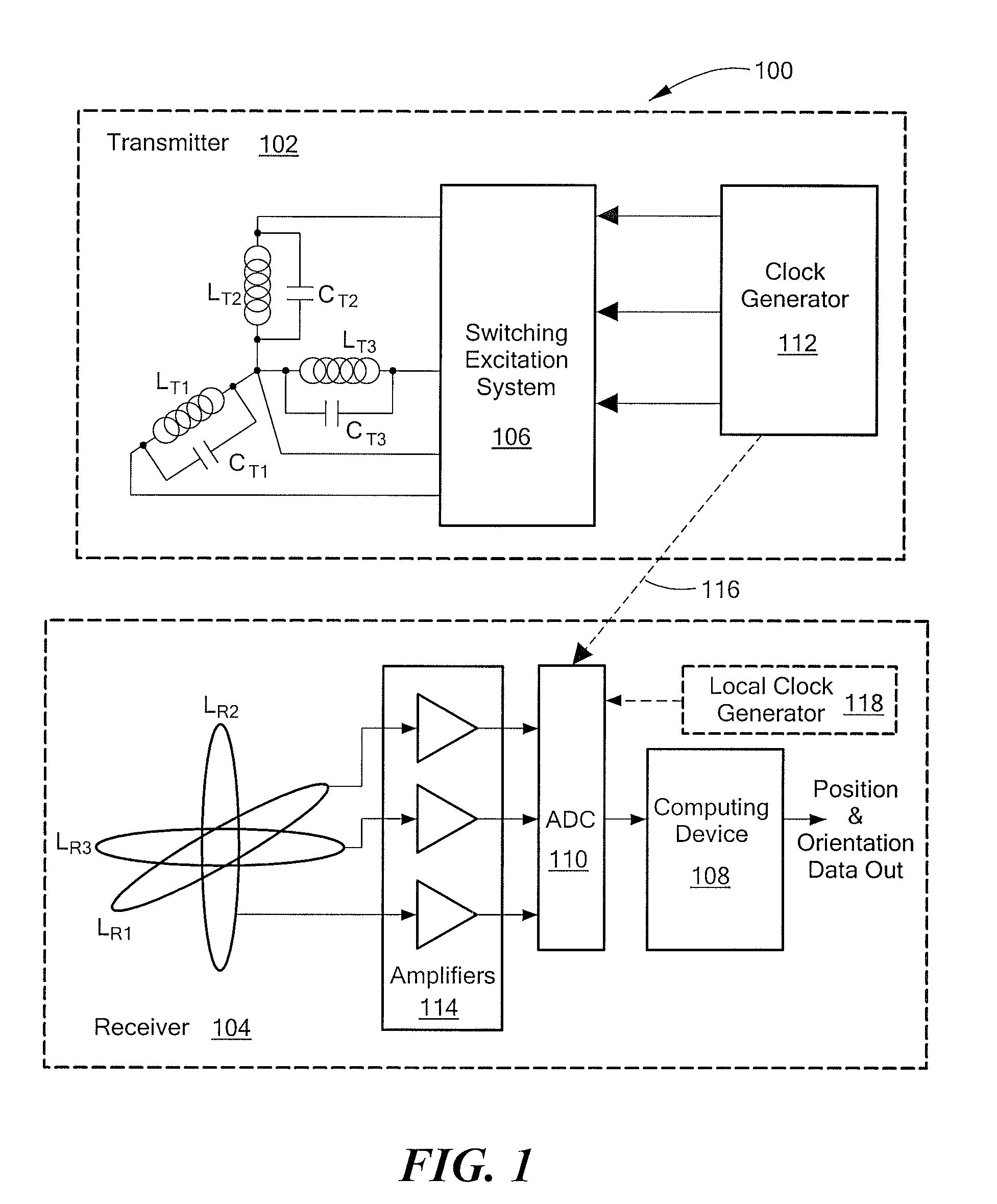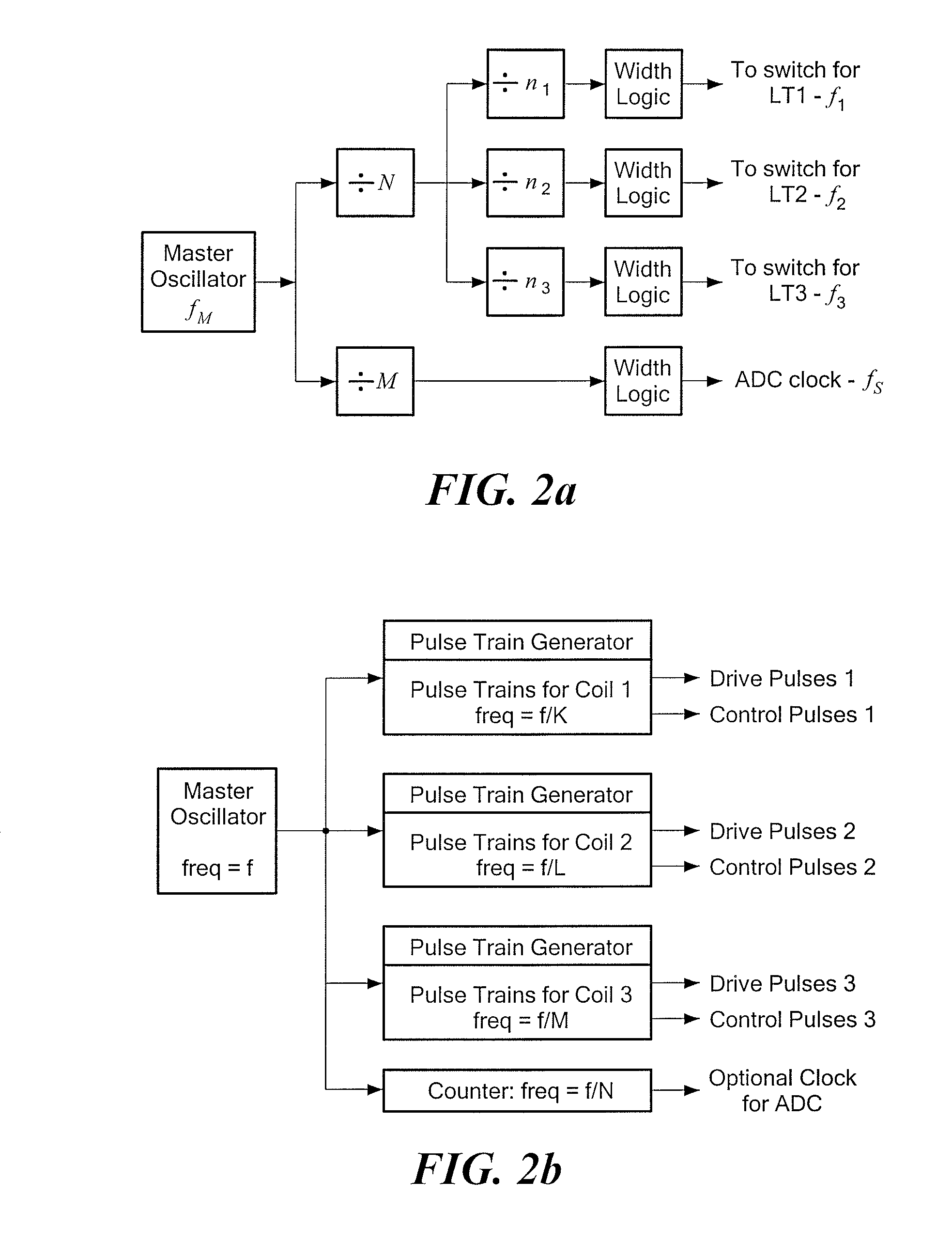Electromagnetic position and orientation sensing system
a technology of position and orientation, applied in the field of electromagnetic position and orientation sensing system, can solve problems such as undesirable connection
- Summary
- Abstract
- Description
- Claims
- Application Information
AI Technical Summary
Benefits of technology
Problems solved by technology
Method used
Image
Examples
Embodiment Construction
[0037]The disclosure of U.S. Provisional Patent Application No. 61 / 173,315 filed Apr. 28, 2009, entitled ELECTROMAGNETIC POSITION AND ORIENTATION SENSING SYSTEM is incorporated herein by reference in its entirety.
[0038]An improved system and method of determining the position and orientation of a remote object is disclosed that avoids the drawbacks of conventional remote object position and orientation determining techniques.
[0039]FIG. 1 depicts an illustrative system 100 for measuring the position and orientation of a remote object. As shown in FIG. 1, the system 100 includes a stationary transmitter 102 and a receiver 104. The remote object (not shown) is associated with the receiver 104. For example, the remote object may be attached to, mounted on, or otherwise coupled to the receiver 104. The stationary transmitter 102 is operative to establish a reference coordinate system. In one embodiment, the transmitter 102 includes a set of three mutually perpendicular coils LT1, LT2, LT...
PUM
| Property | Measurement | Unit |
|---|---|---|
| conduction angle | aaaaa | aaaaa |
| closure time | aaaaa | aaaaa |
| conduction angles | aaaaa | aaaaa |
Abstract
Description
Claims
Application Information
 Login to View More
Login to View More - R&D
- Intellectual Property
- Life Sciences
- Materials
- Tech Scout
- Unparalleled Data Quality
- Higher Quality Content
- 60% Fewer Hallucinations
Browse by: Latest US Patents, China's latest patents, Technical Efficacy Thesaurus, Application Domain, Technology Topic, Popular Technical Reports.
© 2025 PatSnap. All rights reserved.Legal|Privacy policy|Modern Slavery Act Transparency Statement|Sitemap|About US| Contact US: help@patsnap.com



